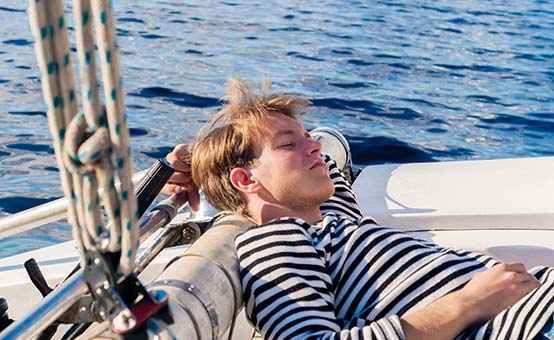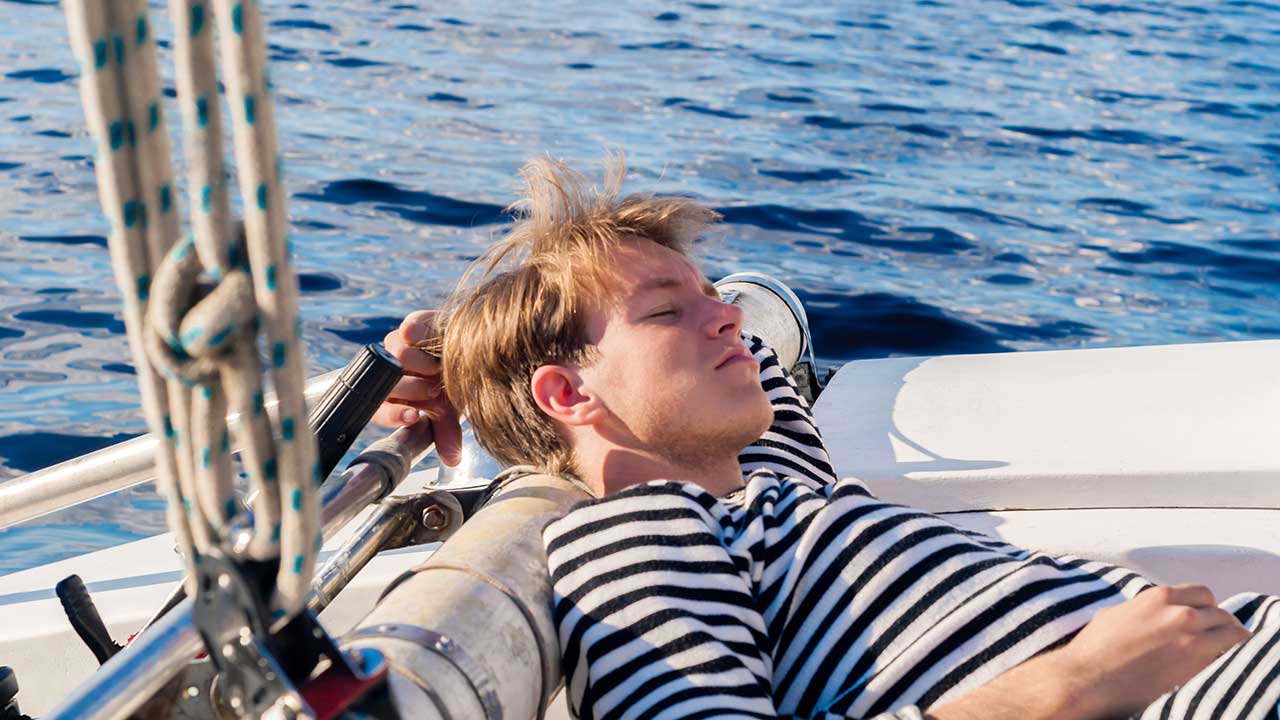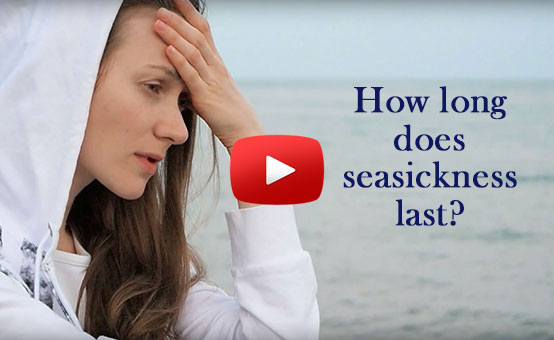

By Petar Denoble, MD, D.Sc.
BOATING SAFETY | Oct 30, 2019
Chances are, you’re all too familiar with the motion sickness that occurs when you’re exposed to the repeated motion of a vehicle while traveling by sea, land, or air. In fact, about 1 in 3 people are considered highly susceptible to motion sickness — plus research reveals that only those without a functioning vestibular system are fully immune!
Just thinking about motion sickness (or seasickness) typically conjures up anxious, unpleasant bouts of nausea and vomiting, but other common symptoms of motion sickness include cold sweats, drowsiness, headache, pallor changes, increases in salivation, and even severe pain.
According to James R. Lackner, Ph.D. in his article “Motion sickness: more than nausea and vomiting”, there’s another set of complex symptoms associated with motion sickness that you’ve likely never heard of. Sopite syndrome (from the Latin word sopire which means to "lull" or “put to sleep”) is distinguished from other manifestations of motion sickness in that it may occur before other symptoms of motion sickness or even in their absence. Moreover, sopite syndrome may persist even after an individual has adapted to the other symptoms associated with motion-induced sickness.
The list of symptoms associated with sopite syndrome is lengthy:
If these symptoms are associated with nausea, then the diagnosis of motion sickness is obvious. However, sopite syndrome may be the main and sole manifestation of motion sickness. It may also precede nausea, which is usually provoked by stronger motions. And it can also outlast nausea or occur and last in a complete absence of it.
Sopite syndrome is difficult for boaters and physicians alike to detect because it presents with non-specific symptoms which can be caused by many other conditions. Common conditions that should not be confused with sopite syndrome include dehydration, sleep deprivation, hunger, hypoglycemia, hypothermia, intoxication, hangover, fatigue from other causes, anxiety, depression, heat, and cold stress.
Most studies of sopite syndrome have focused on aviators, professional sailors, arctic explorers, and astronauts in space — but not on long-range recreational sailors. However, many circumstances examined in those studies are also present in sport sailing.
Noise within the vessel, vibration caused by the engine, and motion caused by harsh weather are all known to be significant stressors that can lead to sopite syndrome, reports Sigurd W. Hystad, a professor of psychosocial science at the University of Bergen.
Besides motion, common provocative factors include working and living in the same space, long stints of confinement in small areas, long work shifts, and sleep deprivation.
Studies also show that sleep apnea and depression traits can make sopite syndrome worse.
For now, there is no reliable treatment for sopite syndrome.
Most treatments of motion sickness focus on the prevention of nausea and vomiting, but they do not address sopite syndrome symptoms. On the contrary, common side effects of motion sickness drug treatments include drowsiness and reduced cognitive functions, which may further exacerbate sopite syndrome. There have been attempts to add mild stimulants to the treatment regimen, but this approach has its downsides, and more research is needed before it can be recommended.
For complex jobs — like airplane pilots — sopite syndrome may be disqualifying, and thus, pilot candidates undergo a selection process to establish their proneness to it.
Treatment recommendations for recreational sailors are the same as those for seasickness — but with an emphasis on education, awareness, and gradual exposure to the sea, which provides for habituation — and hopefully, ample time for acquiring "sea legs". A lone sailor must be especially aware of sopite syndrome and be prepared to cope with it.
Sopite syndrome may affect the safety of sailors and cruisers in various ways. Even mild bouts of it during short sails can affect cognitive functions and reduce the ability of multitasking. Sopite syndrome may dull awareness or alertness. It may reduce communication among crew members. During a long cruise, disinclination to work may make sailors disregard some routine tasks important for boat safety. And for obvious reasons, if a sailor is alone on a boat, the risks of sopite syndrome may be worse.
About Petar Denoble, MD, D.Sc.
Dr. Denoble is Vice President of Research at DAN. After graduating from the School of Medicine at the University of Zagreb in Croatia (then Yugoslavia), he spent 13 years in the Yugoslav Navy as a specialist in naval and diving medicine. In his 20+ years at DAN, he has published in numerous scientific journals, organized workshops, and given frequent talks and keynote addresses at scientific meetings, conferences, workshops, and trade shows. Dr. Denoble has also been a key contributor and leader in DAN’s work on dive fatalities, technical and rebreather diving, health and safety guides and publications, and several other areas of dive medicine, research, and training.
MORE FROM
SAFE PASSAGE

TRAVEL HEALTH | May 24, 2018
How Long Does Seasickness Last?

TRAVEL HEALTH | Jan 23, 2019
Why Boaters Need a "Plan B" for Motion Sickness
THIS WEBSITE DOES NOT PROVIDE MEDICAL OR DENTAL ADVICE.
It is intended for general informational purposes only and does not address individual circumstances. It is not a substitute for professional medical or dental advice, diagnosis or treatment and should not be relied on to make decisions about your health. Never ignore professional medical or dental advice in seeking treatment because of something you have read on the DAN Boater website. If you think you may have a medical emergency, immediately call your doctor, dial 911, or contact emergency services nearest you.